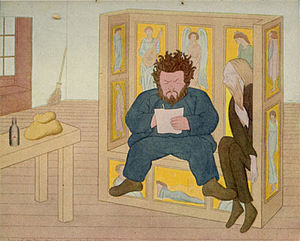
Sir John Everett Millais, 1st Baronet was an English painter and illustrator who was one of the founders of the Pre-Raphaelite Brotherhood. He was a child prodigy who, aged eleven, became the youngest student to enter the Royal Academy Schools. The Pre-Raphaelite Brotherhood was founded at his family home in London, at 83 Gower Street. Millais became the most famous exponent of the style, his painting Christ in the House of His Parents (1849–50) generating considerable controversy, and he produced a picture that could serve as the embodiment of the historical and naturalist focus of the group, Ophelia, in 1851–52.
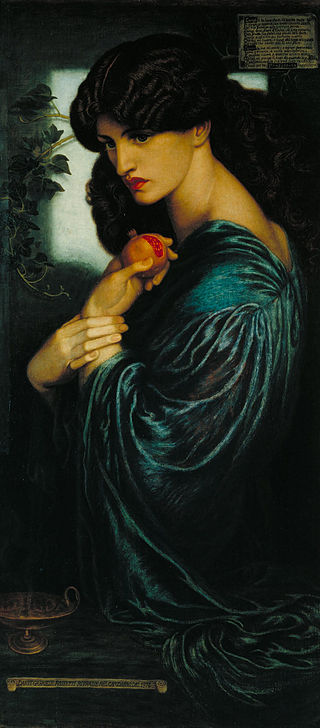
The Pre-Raphaelite Brotherhood was a group of English painters, poets, and art critics, founded in 1848 by William Holman Hunt, John Everett Millais, Dante Gabriel Rossetti, William Michael Rossetti, James Collinson, Frederic George Stephens and Thomas Woolner who formed a seven-member "Brotherhood" partly modelled on the Nazarene movement. The Brotherhood was only ever a loose association and their principles were shared by other artists of the time, including Ford Madox Brown, Arthur Hughes and Marie Spartali Stillman. Later followers of the principles of the Brotherhood included Edward Burne-Jones, William Morris and John William Waterhouse.

Gabriel Charles Dante Rossetti, generally known as Dante Gabriel Rossetti, was an English poet, illustrator, painter, translator, and member of the Rossetti family. He founded the Pre-Raphaelite Brotherhood in 1848 with William Holman Hunt and John Everett Millais. Rossetti inspired the next generation of artists and writers, William Morris and Edward Burne-Jones in particular. His work also influenced the European Symbolists and was a major precursor of the Aesthetic movement.

Sir Henry Maximilian Beerbohm was an English essayist, parodist and caricaturist under the signature Max. He first became known in the 1890s as a dandy and a humorist. He was the drama critic for the Saturday Review from 1898 until 1910, when he relocated to Rapallo, Italy. In his later years he was popular for his occasional radio broadcasts. Among his best-known works is his only novel, Zuleika Dobson, published in 1911. His caricatures, drawn usually in pen or pencil with muted watercolour tinting, are in many public collections.
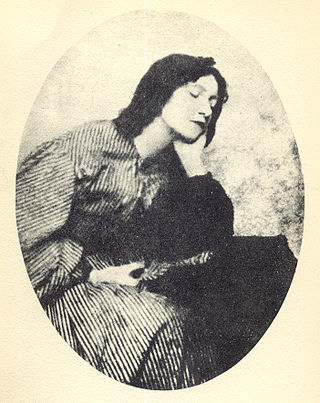
Elizabeth Eleanor Siddall, better known as Elizabeth Siddal, was an English artist, art model, and poet. Siddal was perhaps the most significant of the female models who posed for the Pre-Raphaelite Brotherhood. Their ideas of female beauty were fundamentally influenced and personified by her. Walter Deverell and William Holman Hunt painted Siddal, and she was the model for John Everett Millais's famous painting Ophelia (1852). Early in her relationship with Dante Gabriel Rossetti, Siddal became his muse and exclusive model, and he portrayed her in almost all his early artwork depicting women.

Frederic George Stephens was a British art critic, and one of the two 'non-artistic' members of the Pre-Raphaelite Brotherhood.
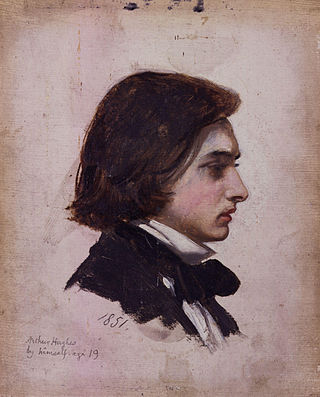
Arthur Hughes was an English painter and illustrator associated with the Pre-Raphaelite Brotherhood.

Anthony Frederick Augustus Sandys, usually known as Frederick Sandys, was a British painter, illustrator, and draughtsman, associated with the Pre-Raphaelites. He was also associated with the Norwich School of painters.

The Scapegoat (1854–1856) is a painting by William Holman Hunt which depicts the "scapegoat" described in the Book of Leviticus. On the Day of Atonement, a goat would have its horns wrapped with a red cloth – representing the sins of the community – and be driven off.
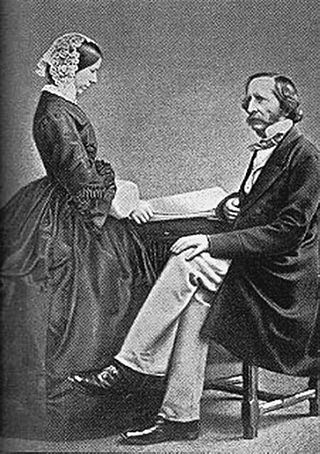
Pauline, Lady Trevelyan was an English painter, noted for single-handedly making Wallington Hall in Northumberland a centre of High Victorian cultural life, and for enchanting with her intellect and art John Ruskin, Swinburne, Elizabeth Barrett Browning, Robert Browning, Christina Rossetti, Dante Gabriel Rossetti, William Michael Rossetti, Thomas Carlyle, John Everett Millais, and other members of the Pre-Raphaelite Brotherhood. She was married in May 1835 to Sir Walter Calverley Trevelyan, 6th Baronet.
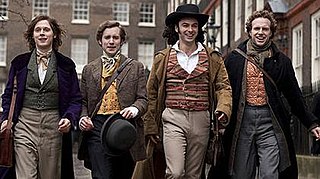
Desperate Romantics is a six-part television drama serial about the Pre-Raphaelite Brotherhood, first broadcast on BBC Two between 21 July and 25 August 2009.

Annie Miller (1835–1925) was an English artists' model who, among others, sat for the members of the Pre-Raphaelite Brotherhood, William Holman Hunt, Dante Gabriel Rossetti and John Everett Millais. Her on-off relationship with Holman Hunt has been dramatised several times.
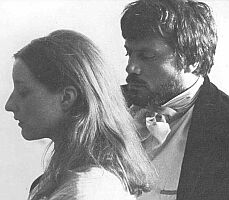
Dante's Inferno: The Private Life of Dante Gabriel Rossetti, Poet and Painter (1967) is a feature-length 35 mm film directed by Ken Russell and first screened on the BBC on 22 December 1967 as part of Omnibus. It quickly became a staple in cinemas in retrospectives of Russell's work. Using nonlinear narrative technique, it tells of the relationship between the 19th-century artist and poet Dante Gabriel Rossetti and his model, Elizabeth Siddal.

Charles Augustus Howell was an art dealer and alleged blackmailer who is best known for persuading the poet Dante Gabriel Rossetti to dig up the poems he buried with his wife Elizabeth Siddal. His reputation as a blackmailer inspired Arthur Conan Doyle's Sherlock Holmes story "The Adventure of Charles Augustus Milverton".
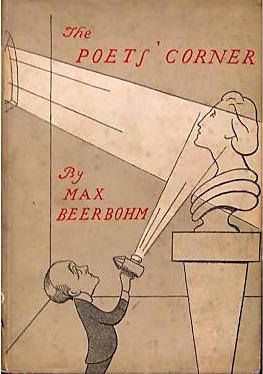
The Poets' Corner is a book of twenty caricatures by English caricaturist, essayist and parodist Max Beerbohm. It was published in 1904 by William Heinemann, and was Beerbohm's second book of caricatures, the first being Caricatures of Twenty-five Gentlemen (1896).

Fifty Caricatures is a book of fifty caricatures by English caricaturist, essayist and parodist Max Beerbohm. It was published in 1913 by William Heinemann in Britain and E.P. Dutton & Company in the United States. It was Beerbohm's fifth book of caricatures, after Caricatures of Twenty-five Gentlemen (1896), The Poets' Corner (1904), A Book of Caricatures (1907), and Cartoons: The Second Childhood of John Bull (1911).

Ecce Ancilla Domini, or The Annunciation, is an oil painting by the English artist Dante Gabriel Rossetti, first painted in 1850 and now in Tate Britain in London. The Latin title is a quotation from the Vulgate text of the first chapter of the Gospel of Saint Luke, describing the Annunciation, where Mary accepts the message brought to her by the Angel Gabriel that she would give birth to a child (Jesus) by God.

Pia de' Tolomei is an oil painting on canvas by English artist Dante Gabriel Rossetti, painted around 1868 and now in the Spencer Museum of Art, on the campus of the University of Kansas in Lawrence, Kansas.

Proserpine is an oil painting on canvas by English artist and poet Dante Gabriel Rossetti, painted in 1874 and now in Tate Britain. Rossetti began work on the painting in 1871 and painted at least eight separate versions, the last only completed in 1882, the year of his death. Early versions were promised to Charles Augustus Howell. The painting discussed in this article is the so-called seventh version commissioned by Frederick Richards Leyland, now at the Tate Gallery, with the very similar final version now at the Birmingham Museum and Art Gallery.

Paolo and Francesca da Rimini is a watercolour by British artist and poet Dante Gabriel Rossetti, painted in 1855 and now in Tate Britain.







